When it comes to the well-being of our canine companions, the use of Neosporin for wound care raises questions that demand careful consideration. Pet owners often wonder about the safety and efficacy of applying this common topical antibiotic to their dogs' injuries.
The insights provided by our expert shed light on the complexities surrounding Neosporin usage in the context of canine health. Understanding the nuances of this topic is crucial for making informed decisions regarding your dog's wound management.
Stay tuned to discover the expert's perspective on whether Neosporin is a suitable option for treating your furry friend's minor wounds.
Key Takeaways
- Neosporin is generally safe for dogs but may be licked off, leading to potential issues.
- Consult a vet before using Neosporin on your dog for minor wounds like cuts and scrapes.
- Watch for allergic reactions like rashes or swelling when using Neosporin on dogs.
- Avoid Neosporin with pain relief ingredients and monitor wounds closely for healing progress.
Neosporin: Safe for Minor Dog Wounds
Neosporin is considered safe and effective for treating minor wounds on dogs, providing topical antibiotic protection to aid in their healing process. It contains Bacitracin zinc, Neomycin sulfate, and Polymyxin B sulfate, which work together to prevent infection and promote healing.
Neosporin is specifically designed for minor wounds such as cuts and scrapes in dogs. While generally safe for use on dogs, caution should be taken as they may lick it off, leading to potential ingestion and associated issues.
It is essential to consult a vet before applying Neosporin to ensure it is appropriate for the specific wound and to monitor the dog for any signs of allergic reactions or adverse effects.
Neosporin Ingredients and Function
When considering the components of topical treatments for minor dog wounds, understanding the ingredients and their respective functions is crucial for ensuring effective and safe healing. Neosporin, a popular choice for minor wounds in dogs, contains three main active ingredients: Bacitracin zinc, Neomycin sulfate, and Polymyxin B sulfate.
Bacitracin zinc works as an antibiotic to prevent bacterial growth, Neomycin sulfate also fights bacteria, and Polymyxin B sulfate further aids in combating bacterial infections. These ingredients work synergistically to help prevent and treat minor cuts, scrapes, and wounds in dogs.
It is important to use Neosporin as directed by a veterinarian to avoid potential risks and ensure the best outcome for your furry companion's healing process.
Risks of Using Neosporin on Dogs
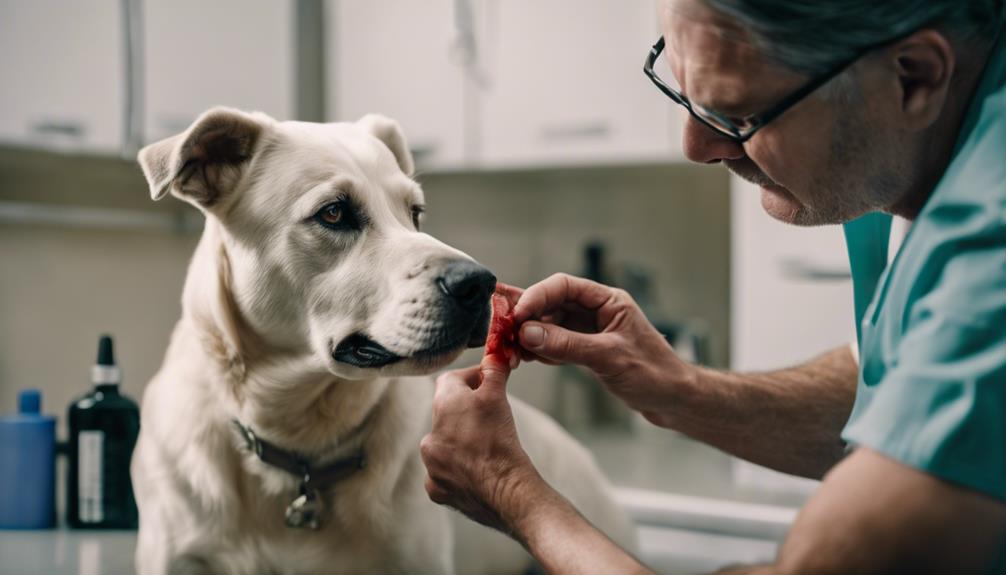
In the realm of canine wound care, it is imperative to understand the potential risks associated with the application of topical treatments like Neosporin on dogs. While Neosporin is generally safe for dogs in small amounts, there are risks to consider.
Dogs may lick off the Neosporin, leading to ingestion, which can result in potential issues. Allergic reactions such as rashes or swelling can also occur in some dogs. Overuse of Neosporin can delay wound healing, and versions containing pain relief ingredients can be toxic to dogs.
It is crucial to clean the wound before applying Neosporin, use a thin layer, prevent licking, monitor for changes, and consult a vet for proper guidance on its application.
Alternatives to Neosporin for Dogs
Consider utilizing Vetericyn as a safe substitute for traditional Neosporin when tending to your dog's minor wounds. Vetericyn is a trusted alternative that can aid in the healing process without the potential risks associated with Neosporin.
Additionally, coconut oil can be used to soothe minor skin irritations in dogs, while aloe vera gel is effective in healing minor wounds. Witch hazel can help relieve itching, and olive oil can moisturize dry dog skin.
These alternatives provide natural and safe options for attending to your dog's minor wounds, offering effective solutions without the concerns that may arise with the use of Neosporin.
Neosporin Application on Dog Wounds
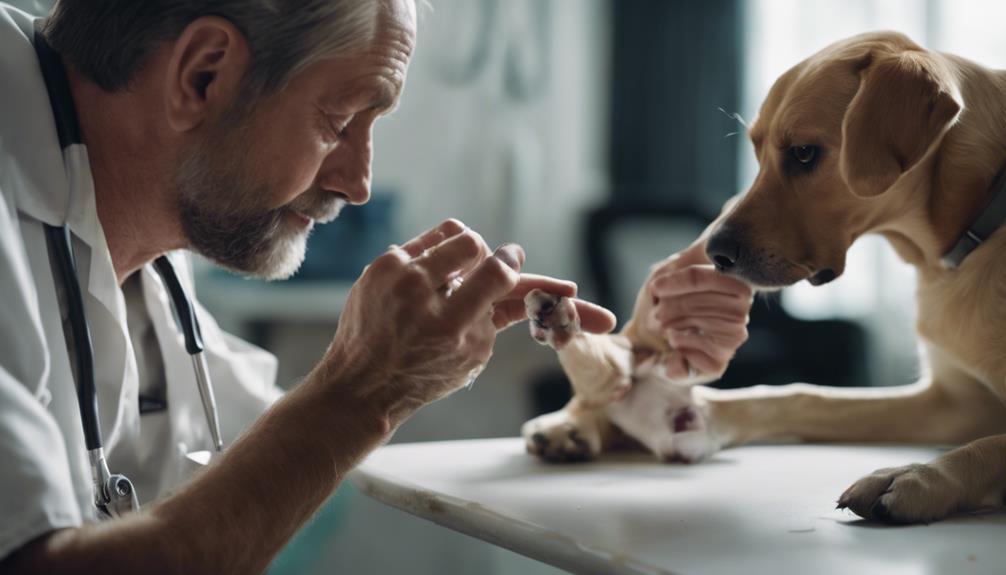
Exploring the application of Neosporin on dog wounds provides valuable insight into the proper care and treatment of minor injuries in canine companions. When using Neosporin on your dog's wounds, remember the following key points:
- Clean the wound thoroughly before applying Neosporin.
- Apply a thin layer of Neosporin on the affected area.
- Prevent your dog from licking off the Neosporin to avoid ingestion.
- Monitor the wound for any changes or signs of infection.
Importance of Cleaning Dog Wounds
Ensuring proper cleansing of dog wounds plays a crucial role in promoting effective healing and preventing potential complications. Cleaning a dog's wound with mild soap and water helps remove dirt, bacteria, and debris that can impede the healing process.
Thoroughly patting the area dry and applying gentle pressure if there is still bleeding can aid in preventing infection. Monitoring the wound for any signs of swelling, pus, or increased pain is essential.
Additionally, preventing the dog from licking the wound and seeking veterinary advice if necessary are important steps in wound care. By maintaining a clean wound environment, pet owners can significantly contribute to their dog's recovery and overall well-being.
Monitoring Dog Wounds for Infection
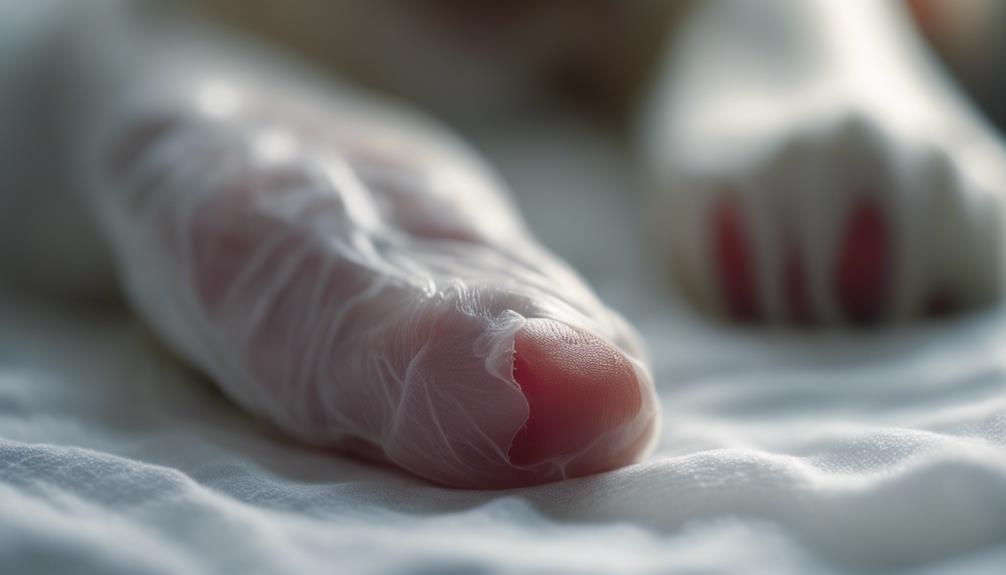
Properly cleaning and tending to dog wounds is paramount in promoting effective healing and preventing complications; monitoring these wounds for signs of infection is a critical step in ensuring the overall health and well-being of the animal.
- Redness: Look out for any increased redness around the wound area.
- Swelling: Monitor for swelling that doesn't seem to be reducing.
- Pus: Check for the presence of pus, which can indicate infection.
- Foul Odor: Pay attention to any foul odor emanating from the wound site.
Regularly examining the wound for these signs can help in timely intervention and appropriate treatment, ensuring the best possible outcome for your dog's recovery.
Preventing Dogs From Licking Neosporin
To deter dogs from licking Neosporin, it is essential to employ effective methods that ensure the medication remains on the intended wound site. One approach is to use an Elizabethan collar, commonly known as a cone, to prevent the dog from reaching the area where Neosporin has been applied. This collar creates a physical barrier that hinders the dog's ability to lick or chew at the wound site.
Additionally, you can distract the dog with toys or treats to redirect its attention away from the Neosporin. Consistent supervision is crucial to intervene promptly if the dog attempts to lick the medication. By implementing these strategies, you can help promote proper healing and prevent potential complications caused by the ingestion of Neosporin.
Reapplication of Neosporin as Needed
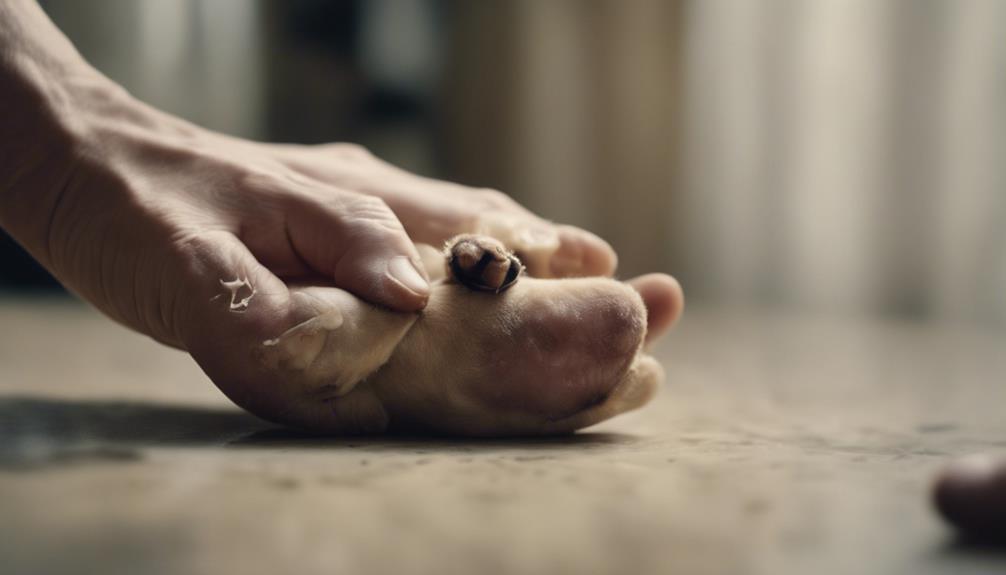
To maintain the effectiveness of Neosporin in promoting wound healing on dogs, understanding the appropriate reapplication frequency is essential. Consistent and timely reapplication ensures the continuous protection and aid in the healing process for your furry friend. Here are some key points to consider:
- Clean the wound before each reapplication.
- Apply a thin layer of Neosporin to the affected area.
- Ensure your dog does not lick off the Neosporin.
- Monitor the wound for any signs of infection or changes.
Following these steps and reapplying Neosporin as needed, as directed by your vet, can contribute significantly to your dog's recovery from minor cuts and scrapes.
Vets' Role in Dog Wound Care
In the comprehensive care and treatment of dog wounds, veterinary professionals play an indispensable role in ensuring proper assessment and management of injuries to promote optimal healing outcomes. Vets are trained to evaluate the severity of wounds, determine the appropriate course of treatment, and provide necessary medical interventions.
Their expertise allows for accurate diagnosis of infections, timely administration of antibiotics if required, and guidance on wound care practices to prevent complications. Vets can also offer advice on pain management, rehabilitation exercises, and monitor the healing progress closely.
Seeking veterinary care for dog wounds is crucial to ensure the best possible outcome and to prevent any potential long-term issues that may arise from improperly managed injuries.
Pet First Aid Kit Essentials
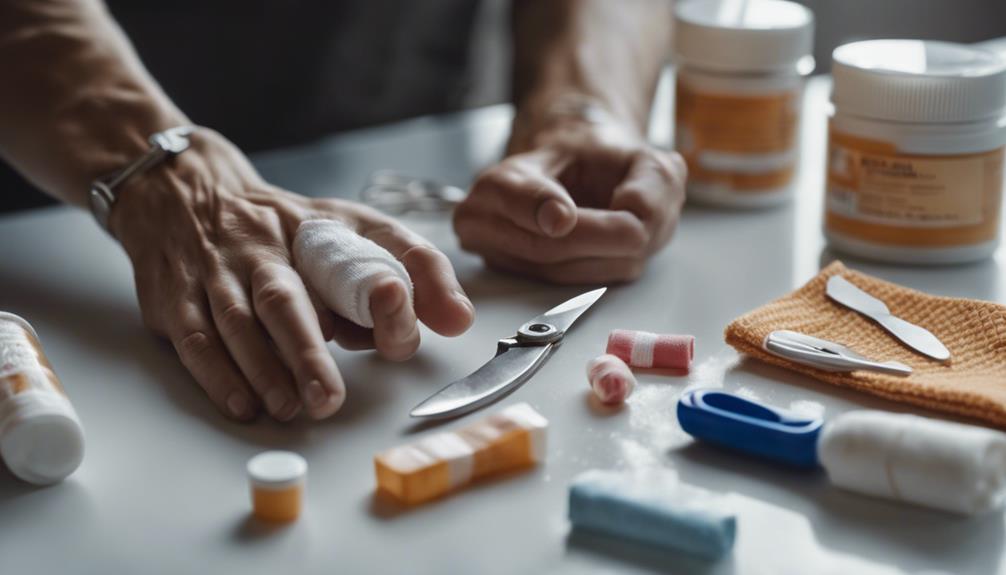
Including essential items in a pet first aid kit is vital for preparedness in managing unforeseen injuries or emergencies involving your canine companion. When assembling a pet first aid kit, consider including the following items:
- Sterile gauze pads
- Adhesive bandages
- Antiseptic wipes
- Tweezers
These items can help address minor cuts, scrapes, or injuries that your dog may encounter. Having a well-equipped first aid kit readily available can make a significant difference in providing immediate care to your furry friend before seeking professional veterinary assistance.
Be sure to regularly check and replenish supplies to ensure your pet's safety and well-being in times of need.
Vet Consultation for Dog Wounds
When addressing dog wounds, seeking a veterinarian's consultation is essential to ensure proper care and treatment. Veterinarians are trained to assess the severity of wounds, recommend appropriate treatments, and prevent potential complications.
Consulting a vet for dog wounds is crucial because they can provide specific guidance tailored to your pet's needs. They may suggest wound cleaning techniques, prescribe antibiotics if necessary, and offer advice on monitoring the healing process.
Additionally, veterinarians can help identify signs of infection or allergic reactions, ensuring the best outcome for your dog's recovery. By involving a vet in your dog's wound care, you can rest assured that you are taking the necessary steps to promote healing and prevent further issues.
Immediate Vet Care for Severe Wounds
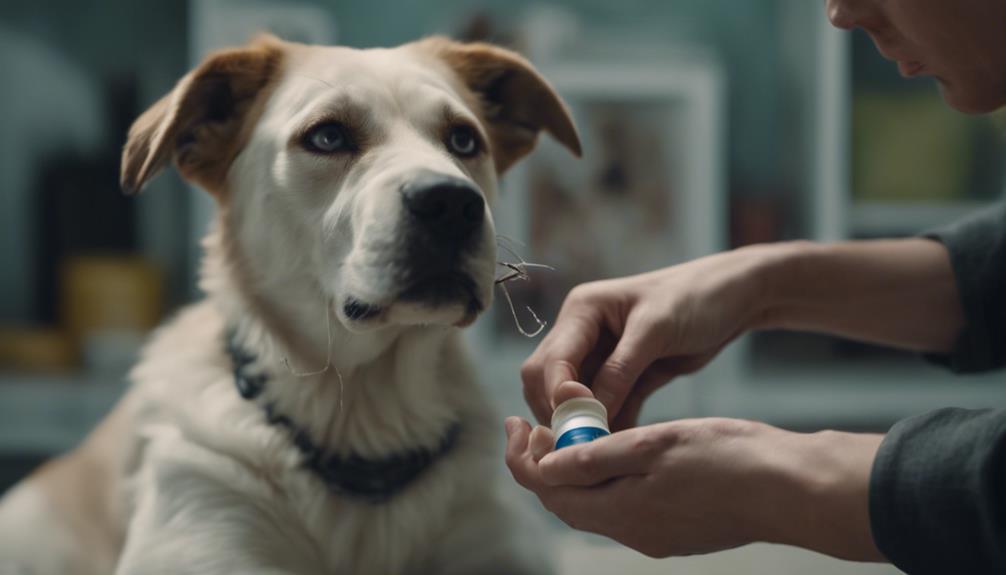
For severe wounds sustained by dogs, prompt veterinary care is crucial to ensure proper assessment and treatment. Immediate attention from a vet can make a significant difference in the recovery and well-being of your furry friend.
Here are some key points to consider when dealing with severe wounds:
- Seek Professional Help: Contact your vet or an emergency animal clinic promptly.
- Minimize Movement: Keep your dog calm and minimize any unnecessary movement to prevent further injury.
- Avoid Home Remedies: Refrain from attempting to treat severe wounds at home without professional guidance.
- Follow Vet Instructions: Adhere to the treatment plan provided by the veterinarian for the best outcome.
Handling Neosporin Ingestion in Dogs
In cases where dogs inadvertently ingest Neosporin, prompt action and monitoring are essential to mitigate any potential risks to their health.
If a dog ingests Neosporin, it is crucial to contact a veterinarian immediately for guidance. While Neosporin ingestion is generally not toxic in small amounts, adverse reactions can occur, especially if the dog consumes a large quantity.
Symptoms of Neosporin ingestion may include vomiting, diarrhea, lethargy, and stomach discomfort. It is important to provide the vet with information on the amount ingested and the dog's weight to determine the best course of action.
Monitoring the dog for any unusual behavior or symptoms and following the veterinarian's recommendations are key to ensuring the dog's well-being after Neosporin ingestion.
Conclusion
In conclusion, the application of Neosporin on dogs for minor wounds can be safe and effective, but it is essential to be aware of potential risks and alternatives. Pet owners should consult with a veterinarian for proper wound care guidance and consider creating a pet first aid kit with essential supplies.
Immediate veterinary attention is necessary for severe wounds, and precautions should be taken to prevent dogs from ingesting Neosporin.




